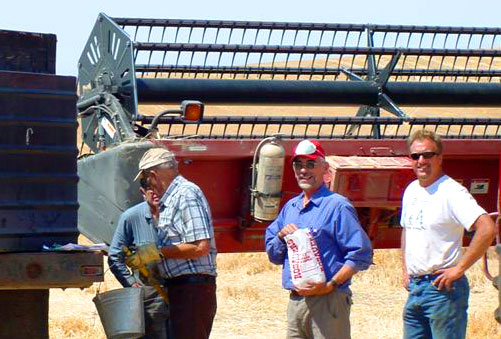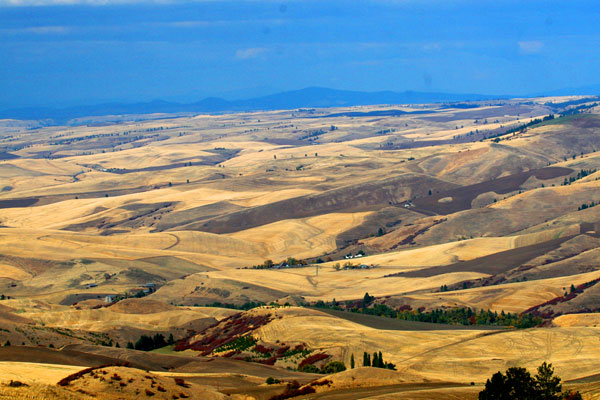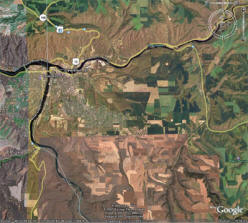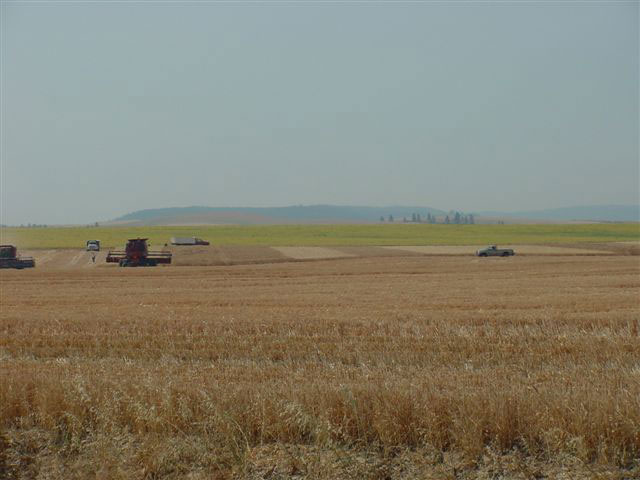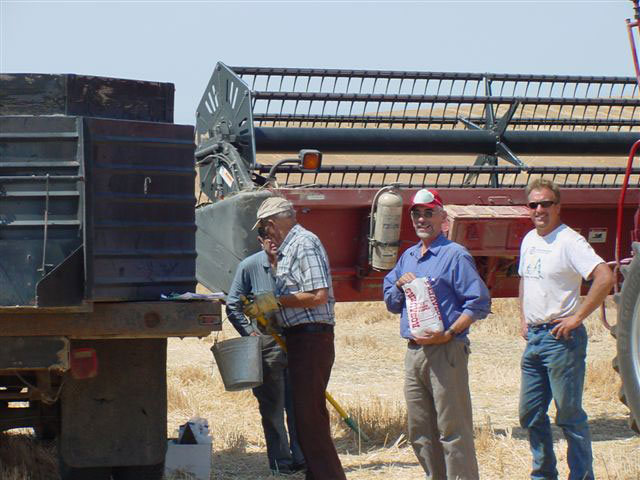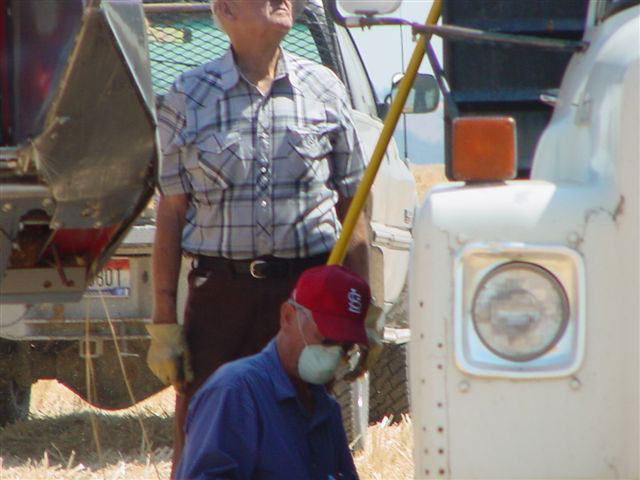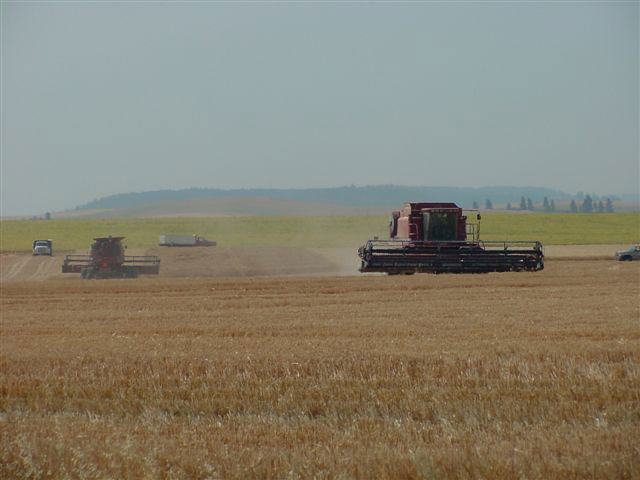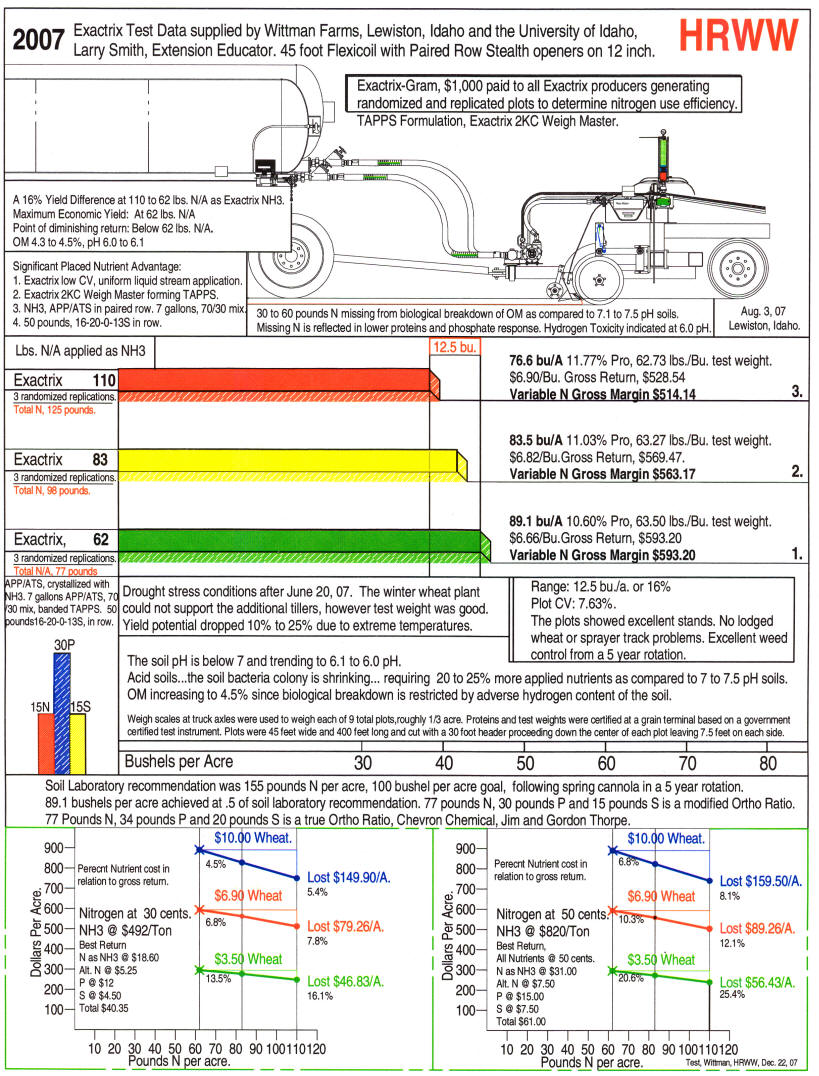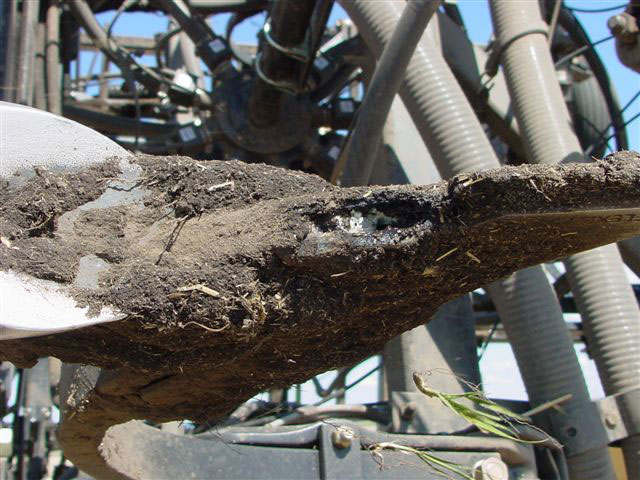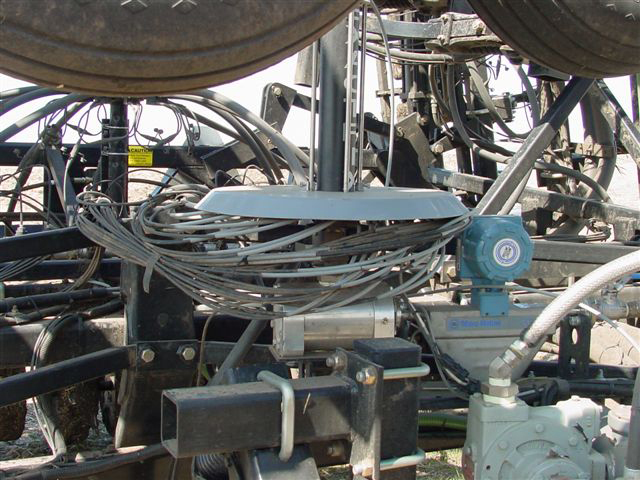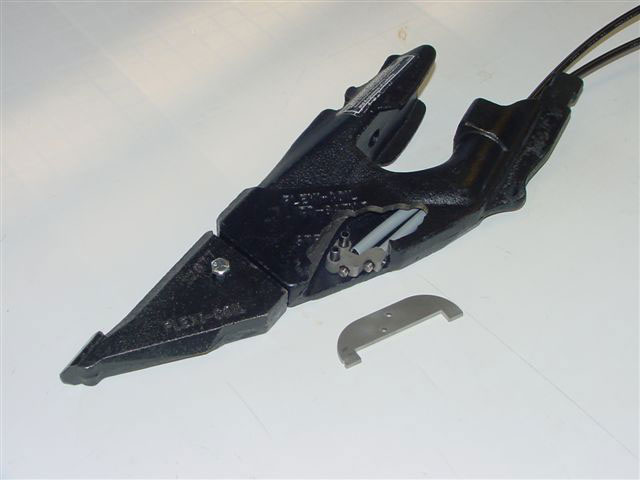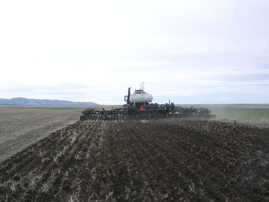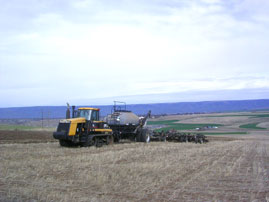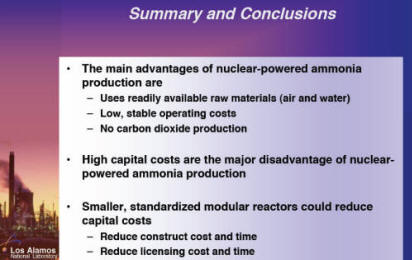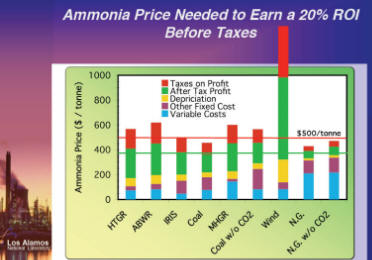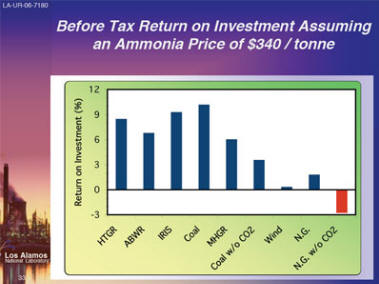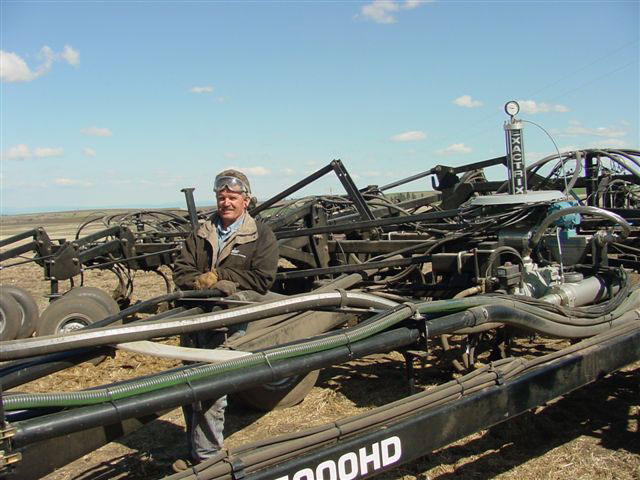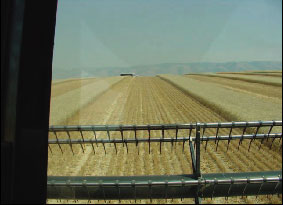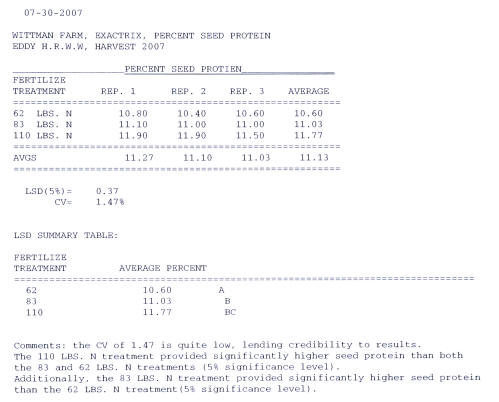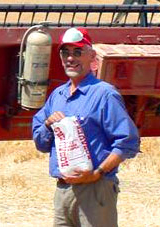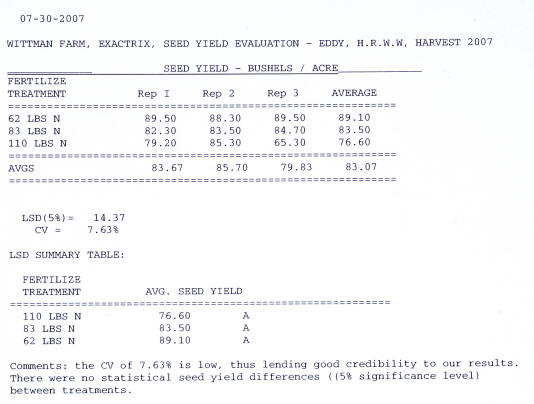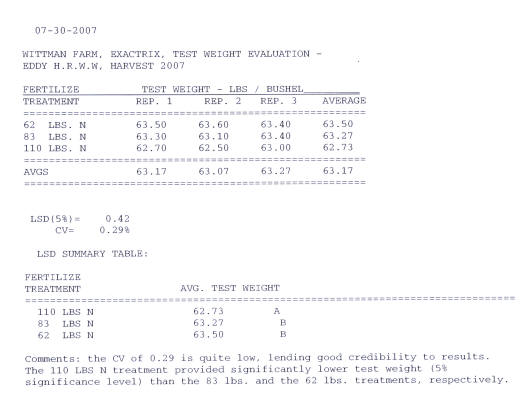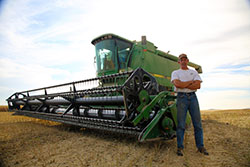|
Conclusive results.
Exactrix TAPPS application requires that N be reduced at
least 40% if yields and net returns are to be
increased...this is a general review of all trials with
TAPPS in corn and wheat.
Yields
will go up when N is reduced allowing P and S to perform.
Over-application of N does result in too much top growth and
not enough root system to support the top growth.
When N
is reduced placed P and S can perform.
The over-application of N masks the critical balance of
nutrients. Allowing P and S to perform in a balance of
27-12-0-7S or the Ortho Ratio developed by Chevron Chemical,
Jim and Gordon Thorpe. The Ortho Ratio is a consistent and
persistent performer in wet and dry conditions.
TAPPS
reviewed....In wet conditions N is stabilized and roots
proliferate with placed P and S...in dry conditions N, P and
S are in a balanced ratio.... developing deeper and better
roots.
Balance of nutrients indicates that N should never be
applied as a single product. NH3, Solution 32, or Urea
should never be applied as a single product unless the
agronomist is trying to mask the problem. All top dressing
approaches are known for shallow roots and low N efficiency.
Nutrients must be placed with root pattern geometry to get
best returns.... N,P and S must be side dressed into the
growing crop if yield potential is greater than planned....A
second trip is always considered to develop the best returns
under wet conditions. Side dressing winter wheat with
single disc openers is possible if yield potential is going
higher using a balance of N,P and S.
Applying at a 2.2 to 1 ratio of N to P and 3.8 to 1 ratio of
N to S is time proven...applying more N will reduce
yields with TAPPS....over-concentration of the nutrient band
with nitrogen is not economically efficient and is
considered toxic. Harapiak and Beaton have proven this
nitrogen interference problem. Go
www.exactrix.com/NP.htm There is an over
concentration point using old fashioned non uniform
application and sinusoidal flow techniques.
Questions: When conditions move to 20% above normal
rainfall should producers side dress winter wheat with
single disc openers? If the yield potential is much greater
than planned should side dress TAPPS be considered as the
plant breaks dormancy? At $6.50 wheat is side dress
economical? What is the correct wheat price to consider side
dress in wet years? Can nutrients be timed correctly?
At lot of
questions surface when the nutrient prices increase so
significantly and commodity prices do not make the same
move. 10 cent N and $3.00 wheat has been a traditional
standard in the previous decade...if N is 30 cents then
wheat needs to be $9.00 per bushel....But if wheat is $9.00
per bushel it becomes even more important to reduce
N....because N hurts yield when it is over applied. Reverse
Thinking needs to be applied with Exactrix TAPPS
application.
A good
technique with Exactrix TAPPS applications is to spend no
more than 12% or the gross income on nutrients. Lower pH
soils may require more nutrient...higher pH soils may
require less nutrient.
Producers
spending more than 12% of the gross income for nutrients
need to review their application process.
Bob
Wittman
Comments on the Trials.
The
rotation is No-till Spring Canola. The rotation is at least
four years. Garbanzo Beans are in the rotation...the
rotations are normally followed closely with very good weed
control. To review the 2006 test plots at Wittman Farms go
www.exactrix.com/ISW.pdf
The plots
were excellent. Weed Control was very good, No hail...No
down wheat, no sprayer track issues. 400 feet in length.
Electronic scaled with an experienced team. The combines
were equipped with a yield monitor...no protein monitor on
the combine. The electronic scales were located a the four
corner axle points of the truck. Larry Smith and Bob Brown
followed standard procedures and Todd Wittman handled the
harvest combine.
Terms:
TAPPS, Tri-Ammonium Poly Phosphate Sulfate, Super
ammonization on APP/ATS. Banded and mixed at two common
injection points with APP/ATS injected first and NH3 driven
into the APP/ATS to assure crystallization of the two
materials. To formulate TAPPS the application system must
apply uniformly port to port at low 1% CV and no sinusoidal
delivery in the lineal streaming band. Forming crystalline
TAPPS requires special attention to the injection point and
the mixing of the two materials. Not to be confused with
dual placement which does not mix the two
materials....intimate contact of the two materials is
required to make the crystals of TAPPS, circa FFF, Larry
Murphy. Proposed but never achieved until recently
using Exactrix process management.
APP, Ammonium Poly Phosphate or 10-34-0, 11-37-0
built from super phosphoric acid and NH3 and manufactured in
TVA or Shell reactors in 50 to 100 mile radius actual area
of use. In the Great Plains mobile reactors produce APP at
rail sidings for large Coops using water, and rail cars
of super phosphoric acid and NH3. APP allows Zn and other
micro nutrients to be mixed and blended into the
polymer. APP is normally used in a 60 day period from date
of manufacture.
ATS, Ammonium Thio-Sulfate. 12-0-0-26S, built at
regional refineries as a by-product of removing sulfur from
energy products. TKI is the primary supplier. Thio-Sul is
trademarked by TKI and is also referred to as ATS. The
material is not only a sulfur source, ATS is listed as a
nitrogen stabilizer by NRCS and plant food organizations.
Thio-Sul has been known for over 40 years to stabilize
nitrogen. ATS is marketed strongly as a nitrogen stabilizer
where such products as N-serve are marketed. ATS mixes well
with APP. Homogenous blends are easily adjusted to the crop
requirement.
Micro Nutrients. Ammoniated Zinc is normally mixed
with TAPPS at concentrations of no more than 1 pound Zinc to
20 pounds P. Higher levels of Zinc can be applied but the 20
to 1 ratio must be maintained. Boron is a viable
micro-nutrient to improve seed set in canola. The
advantages of liquid application of micro-nutrients is so
little is required compared to dry applications.
Low CV application, supplying nutrients into
multiple bands with very little variance at each port
outlet. A mathematical calculation that measures risk and
repeatability. Each 1 % of CV means 1% is lost or not used.
Pressure reducing NH3 systems have CV applications of 30% to
50%. Low CV application, allows application of nutrients to
be reduced since each band is very close to being exactly
the same. Not to be confused with the per acre rate....the
band rate is the ultimate rate. Nutrients are reduced
because the old methods of application were so inaccurate
that the applied nutrient algorithm established for soil
test labs was based on high CV application and lack of
timing.
High Nutrient Cost...Nutrient costs should never
exceed 12% or the gross income....if nutrient cost goes
above 12% of the gross income per acre.... the application
process must be reviewed and new techniques of application,
timing and root pattern geometry must be reviewed. Exactrix
irrigated corn producers in Nebraska and Kansas typically
spend between 8% to 12% of the gross income for nutrients in
2007.
Proven Yield Method...A means to develop a nutrient
recommendation based on what the crop needs to make good
average yields. The Proven Yield Method no longer applies
with Exactrix application since the nutrient cost has
tripled and may double again. Process management, timing and
geometry reduce nutrient requirement. The Proven Yield
Method was based on high CV application and low nutrient
cost in relation to the commodity irregardless of the
timing.
Economic Method....Reduces risk to lowest levels
and allows good returns. A means to generate a nutrient
recommendation without taking excessive risk. The economic
method has been utilized for many years by dry land
producers.
Nitrogen Price.....Green Markets Review June 2007...Varies
from $800 US dollars per US Ton in Medicine Hat,
Alberta Canada at 48.8 cents per pound N,
to $450 per
ton in Dodge City, Kansas at 27.4 cents per pound N. Wide
variations in nitrogen pricing are due to lack of
competition, transportation, and long term contracts.


At 48
cent N...nitrogen as NH3 will be manufactured with wind
making hydrogen. The technique may be portable Haber Bosch
plants coming to the hydrogen or transporting hydrogen from
wind farms to the Haber Bosch plant.
The
energy companies and the lack of competition on a local
basis is the problem as the supply of low cost hydrogen goes
away. The byproduct oxygen is also a big question as wind
farms gear up with hydrolysis techniques to make clean
hydrogen and oxygen. Will the oxygen be used to reform the
hydrogen with atmospheric nitrogen to make NH3? About 6.6
billion people want to know.
Environmental aspects of CO2 expulsion into the atmosphere
may cancel out the need for a hydrocarbon source to make
NH3.
Presently
42% of the NH3 is imported. 17% comes from Canada and 25%
from Trinidad, Tobago. Domestic production of NH3 is a
priority long term and a matter of national security. As
the Ethanol industry expands the NH3 manufacturing business
becomes the lynch pin of reliable and low cost ethanol which
is so called carbon neutral.
The NH3
manufacturing business will be switching to the
environmental solution to keep CO2 out of the atmosphere.
The diminishing supply of low cost hydrocarbons will produce
higher food costs and a need for process management. Less
carbon will go into the atmosphere as NH3 plants move away
from hydrocarbons. Coal is an option and it is being
utilized at Coffeeville, KS and Beulah, ND. Transportation
becomes a major problem with coal fired plants making NH3.
Nuclear
power could also be considered as a means to develop low
cost NH3 with steam reformation. Hydro power is not likely
to build NH3 since transportation is very important.
Diesel
Fuel Price...$3.50 a gallon at the farm - Jan 2008
Hedge your nitrogen and diesel fuel costs.
Phosphate Price....Green Markets pricing in June
indicated 35 cents for each pound of P in 11-52-0......APP
or 10-34-0 pricing is 39 cents per pound of P for the same
time period. Considering APP as being about twice as
efficient as 11-52-0 when super ammoniated as
TAPPS....10-34-0 is a bargain due to the application
technique and the formulation.
Super
Phosphoric acid was about the same price as 11-52-0 at 35
cents per pound of P....so no need to try to handle 0-70-0
and meter it uniformly with the current economics...Super
phosphoric acid is a very difficult material to meter and
handle considering a difference of 4 cents. But Super
Phosphoric acid has it's place in direct application, but
not many acres are applied.
11-52-0
has never been a good choice for super ammonization since it
is so heavily loaded with calcium and is the bottom of the
barrel at the Phosphate plant. Dry 11-52-0 can not be
delivered in an even uniform lineal band. Super ammonization
of 11-52-0 may form a good portion of non available rock
phosphate due to ammonization precipitate and high calcium
in the carrier.
Noting
that homogenous versions of dry P include 16-20-0-14S.
This is a good choice if you absolutely must use a dry P
source. Producers should not attempt use dry Zinc MNS with
dry P....dry Zn is cost prohibitive as dry zinc does not
perform as a homogenous blend....A homogenous APP/ATS blend
of ammoniated Zinc is at least 4 times more competitive.
Sulfur Price.....ATS or Thio-Sul as 12-0-0-26S is
manufactured in Billings, Montana, and Coffeeville, Kansas
by TKI. The pricing is 28 cents to 30 cents per pound of S.
Thio-Sul blends well with 10-34-0 and makes a homogenous
blend. A typical blend is 70% APP and 30% ATS.
Thio-Sul should never be used in the seed row. Exactrix
recommends that ATS be adjusted upward for oil seed
production. ATS is typically applied for band stabilization
at 10% of the NH3 flow.....somewhere between 2 and 3 gallons
per acre of ATS is typical with 7 gallons of APP. Sulfur
must be adjusted upward in low CEC soils.
Avail....Can be mixed with APP/ATS to improve the
polymer content. Avail may have some value for overwinter
stored APP to raise the polymer content.
Rotational Band Loading....Allows P to
become more available to the plant over time..Go to
www.exactrix.com/CRF.htm.
Rotational Band Loading in No-till is a powerful management
tool.
Sinusoidial Flow....Dry fertilizers are
delivered in a sine wave flow and also a higher port to port
CV than Exactrix 2KC and 2KP, TAPPS Formulators go to
www.exactrix.com/TF.htm
. Exactrix delivery systems of liquid APP and NH3 have no
sine wave flow. Go to
www.exactrix.com/Sine.htm
|

